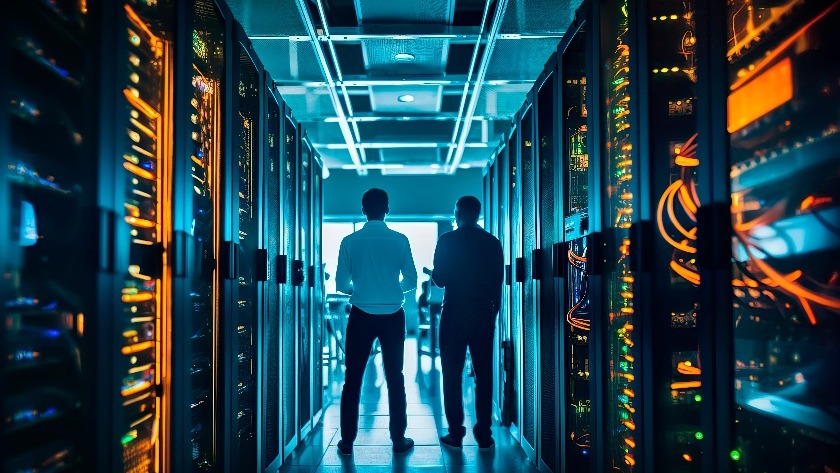Energy Monitoring Systems & Data Center Compatibility
As the demands on data centers continue to grow, space is at a premium in existing facilities. In an attempt to maximize their computing per square...
3 min read
![]() Packet Power Team
:
Sep 6, 2023 2:36:48 PM
Packet Power Team
:
Sep 6, 2023 2:36:48 PM

Facing soaring energy prices, data centre operators are doing everything they can to become more efficient. End-user demand continues to surge and improving power usage effectiveness (PUE)–which is increasingly harder to achieve–is required as part of fast-approaching new policies.
For example, the European Green Deal aims to transform the European Union into a climate-neutral economy by 20501. More than 100 data centre operators and trade associations have pledged their support for the European Green Deal by signing the Climate Neutral Data Centre Pact.
As part of the pact, all new data centres built in cooler climates from 2025 onwards must have a PUE of no higher than 1.3 when operating at full capacity. For new facilities built in warmer climates, where cooling is more challenging, the target PUE is 1.4.
Under the new guidelines, existing data centres built prior to 2025 will also be required to meet these same PUE targets by 2030. Although not bound by the EU’s regulations, data centre operators in the U.K. who are also looking at improving PUE in part because of volatility in energy prices.
Key to achieving energy-saving innovations is having reliable data on power usage, like kilowatt-hours, from energy monitoring systems.
With headquarters in London and Berlin, Daxten helps data centres across Europe optimize power distribution and cooling systems with energy and environmental monitoring.
“Controlling operational costs is really drilling down to see what is actually utilizing that power and identifying whether that equipment is either obsolete orno longer required,” says Phillip McGuinness, Business Development Manager at Daxten. “Facility managers want to understand how much power each piece of equipment is consuming in a particular area so they can take action on it.” Having access to reliable data on kilowatt hours is key to addressing these issues.
Daxten retrofits data centres with Packet Power’s environmental and energy monitoring systems. McGuinness says “the ease of installation is one of the key points,” because the monitors are small, wireless, and “will automatically join a network and make the data centre operator’s life much easier…It literally powers up and is visible to them. I think that's the light bulb moment. And the proof is when we get another order or they've spoken to their colleague in another country who says, ‘we also need to use this.’”
Devices manufactured in the USA from Packet Power can securely feed data into third-party building management systems (BMS) and data centre infrastructure management (DCIM) tools. With the data in hand, operators can quickly adjust their equipment and facilities to maximize energy savings.
“Essentially, what we're trying to do is separate the hot and the cold air to make the data centre as efficient as possible,” says McGuinness. “And then we can measure that. We can use a metric of every degree you can put your set point up, you can save around 4% of your cooling costs…It actually takes longer to go through the purchasing and procurement cycle than it does to start making the savings.”
Another way data centres save money with environmental and energy monitors is by spotting problems before they become catastrophic and minimizing outages.
“We've seen some customers actually put temperature monitoring at the point of the breaker,” says McGuinness. “They see a trend increase in the temperature and can anticipate breaker failure…it gives them that level of preventative maintenance, which is invaluable to data centres because they do not want outages at any time.”
Packet Power energy sensors can be installed on a panelboard, busbar, or power distribution units (PDU). Their presence can give operators valuable insights into any incidents that affect operations.
“Being able to have a historical timeline of power trends means that they can pinpoint power metrics if an event occurs,” says McGuinness. “Then they can drill down into the numbers and see what the problem was, what affected the power, and how it affected it.”
Higher energy prices across Europe mean the precise information on kilowatt hours is more valuable than ever to data centres. If your facility wants to begin saving money by optimizing cooling efforts and identifying inefficient equipment, please reach out to the Packet Power team and we’d be happy to connect you with one of our partners in your region to meet your needs.

As the demands on data centers continue to grow, space is at a premium in existing facilities. In an attempt to maximize their computing per square...

Packet Power customers gain access to EkkoSense’s innovative AI-based 3D visualization and analysis software and unique Cooling Advisor...

If knowledge is power, then what is knowledge about power? It’s a problem solver and efficiency booster for your business. When you monitor power use...